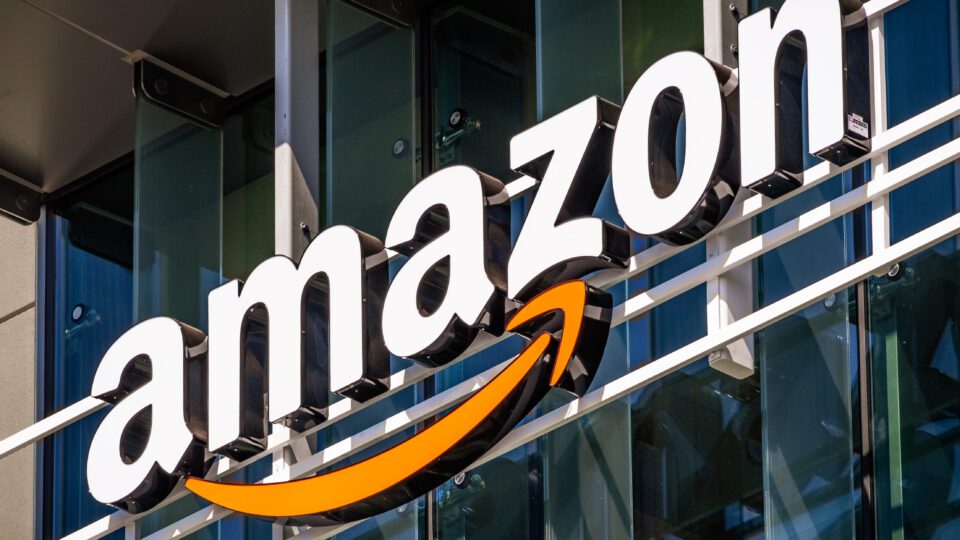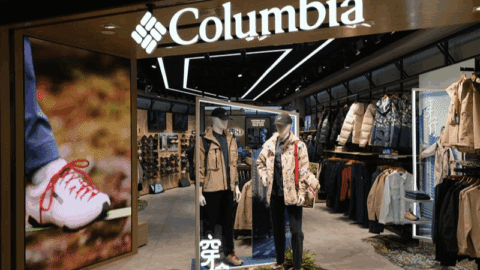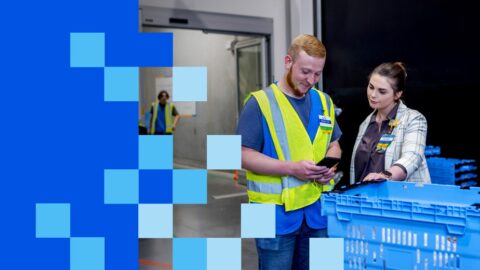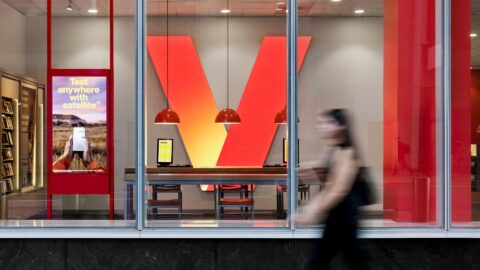The pandemic made “supply chain” a commonplace term, and now Amazon wants to make it a commonplace service. Ahead of its annual sellers’ conference, Amazon Accelerate, the tech giant announced the debut of a new suite of solutions for sellers called “Supply Chain by Amazon” (which we are assuming will be acronymized as “SCA” if history is any indicator).
SCA (if we can be so bold) is touted by the company as “an end-to-end, fully automated set of supply chain services that will provide sellers with a complete solution to quickly and reliably move products directly from their manufacturers to customers around the world.”
Piyush Saraogi, VP of Worldwide Fulfillment by Amazon (FBA), described Supply Chain by Amazon as a “huge game changer for sellers,” adding: “Similar to other areas where Amazon has decided to go big, we believe it’s going to spark a lot of competition and ignite new innovation that will drive the entire industry forward.”
Saraogi likened SCA to the debut of FBA back in 2006, pointing to the similar aims of the two offerings — simplifying sellers’ businesses and creating a better experience for customers in the form of more products delivered more quickly.
“While FBA has made a huge impact on seller success, if you think about a product’s journey, it doesn’t really start with FBA, it starts much further upstream,” Saraogi said in an interview with Retail TouchPoints. “It typically involves manufacturing, global and local logistics, storing products in bulk and distribution to multiple sales channels — and then fulfillment and that last-mile delivery that FBA offers.”
Amazon is making big promises for its new solution, with Saraogi saying that SCA will “simplify that entire supply chain journey and help our sellers stay in stock, while benefiting from greater reliability, faster speeds and significantly lower costs.”
We have all the details on how they plan to do just that, but first allow us to point out a few key factors to consider:
- SCA continues Amazon’s push to support brands beyond its own ecosystem, which began with the debut of Buy with Prime at last year’s Accelerate conference. This is most notable in the multi-channel fulfillment solution, which will see Amazon deliver inventory to any channel, physical or digital, where a seller needs it. Yes, that means brick-and-mortar stores. Yes, that also means DTC and other websites that aren’t Amazon.
- As in the past, if this new offering is a success, it will likely become the industry standard. Walmart and TikTok have both rolled out their own versions of FBA, and while they’ll likely sit back and wait to see what happens with SCA, if it works, expect similar offerings in the not-too-distant future.
- SCA has the potential to vastly increase the cross-border reach of Amazon sellers. At the Prosper Show event for Amazon sellers earlier this year, one of the biggest barriers that sellers listed for not expanding into other countries was the complicated logistics involved. While this doesn’t solve all those concerns, it could certainly push sellers to expand via Amazon into new regions; and finally,
- All of this must be placed in the context of Amazon’s looming, albeit not yet official, antitrust battle with the FTC. In its analysis of Amazon’s business, Bloomberg noted that FBA is one of the biggest vulnerabilities in Amazon’s case, because sellers that use FBA are given better visibility on Amazon.com. Given that SCA is essentially an expansion of FBA’s capabilities, intended to further streamline the process of getting products to consumers, it could well fall under that same umbrella of being considered “anticompetitive” if merchants that buy into SCA are given preferential treatment on Amazon.com.
Key Components of ‘Supply Chain by Amazon’
There were hints at the direction Amazon was heading at last year’s Accelerate, where both Amazon Warehousing and Distribution (AWD) and Multi-Channel Fulfillment (MCF) — two key components of SCA — were unveiled for the first time. And indeed, much of what is included in SCA is not necessarily new but has been combined and/or expanded into a new comprehensive offering, including:
- Warehousing and distribution: Announced at last year’s Accelerate and subsequently launched in beta, AWD is now available to all Amazon sellers and allows them to store items in bulk for up to 80% less than what it would cost to store products at an FBA facility. Also, unlike FBA facilities, AWD will not charge peak pricing for storage during Q4. Amazon also will soon be rolling out the ability to book storage reservations, allowing sellers to lock in warehouse capacity in advance at a discount.
- Multi-channel distribution: Sellers that store products in an AWD facility will be able to move those items to any sales channel, not just Amazon FBA. The program is currently being piloted with a select number of sellers and will roll out more broadly later this year. Once it’s live, it will enable sellers to streamline their inventory management. “Imagine a seller has all of their inventory sitting in AWD,” said Saraogi. “It’s a single inventory pool that they can then use to distribute to Amazon FBA or any other sales channel they may have. This is a big step forward for us in empowering seller success, both on and off Amazon.”
- Expanded and discounted cross-border transportation: Customers using the existing Amazon Global Logistics (AGL) service will now get up to 25% off cross-border transportation if items are bound for an AWD distribution center. Sellers already use AGL to move millions of packages around the world, according to Saraogi, and in addition to the new discount, Amazon also will expand its origin services for AGL beginning in October, meaning they will send a truck to pick up products directly from the factory rather than asking sellers to drop pallets off at AGL locations. Saraogi also pointed out that AGL’s all-inclusive pricing is unique because it encompasses everything needed to transport products overseas, including ocean transportation, storage along the way, customs clearance and local transportation to AWD distribution centers.
- Streamlined domestic transportation in the U.S.: Not to leave out domestic sellers, merchants that use Amazon’s Partnered Carrier Program (PCP) also will get a 25% discount on transportation costs for products bound for an AWD facility.
- Automatic inventory replenishment: For product in AWD facilities, Amazon will use its machine learning and supply chain optimization capabilities to automatically replenish inventory into the optimal Amazon and non-Amazon fulfillment channels in anticipation of consumer demand. This a continuation of Amazon’s ongoing regionalization effort, designed to get products closer to consumers and thus enable faster delivery. “We’re not just focused on maintaining in-stock; we are really focused on maintaining local in-stock and placing [seller] products at the right locations at the right time,” said Saraogi. “When you place products close to customers, it gives a higher probability for same- and next-day deliveries, which both our sellers and customers are going to love.”
“Our vision has always been to make it as easy as possible for sellers to serve customers around the world, and providing our selling partners with a simple, fast, cost-effective solution to a challenge that has become increasingly unpredictable and complex is an important investment in sellers’ success,” said Dharmesh Mehta, VP of Worldwide Selling Partner Services at Amazon in a statement. “With Supply Chain by Amazon, Amazon will pick up sellers’ inventory directly from their factory and manage the supply chain logistics through delivery to customers’ doorsteps. Sellers will be able to offload even more of the complexity of their supply chain logistics to Amazon, both for the products they sell in Amazon’s store and through other sales channels, including online and physical store locations.”
And Saraogi said that this is just the beginning, promising that the company will be rolling out “new launches in the coming months, throughout 2024 and many years into the future.”
What Does Amazon Get Out of the Bargain?
At last year’s Accelerate conference, Doug Herrington, CEO of Worldwide Amazon Stores, described the way Amazon assesses potential business moves: “We internally calculate downstream impact, or DSI, for almost everything that happens on Amazon,” he said. “Anything that we change has a short-term impact and a long term-impact on customer behavior. For instance, if we see that we have an uncompetitive price on a product, we can measure that customers are going to shop less with us in the moment. Interestingly, we also see that when a customer sees an uncompetitive price they will shop less with us over the next 365 days — that is our DSI.”
The DSI must look good on supply chain services, but Saraogi also had a much more straightforward answer to the question of Amazon’s motivations: “We only win if our sellers win,” he said. “When you think about the benefits of Amazon, it’s really about delighting customers and sellers. As we have more reliability, as we are able to deliver products faster, our customers are going to love it, which is obviously going to be good for Amazon.”















